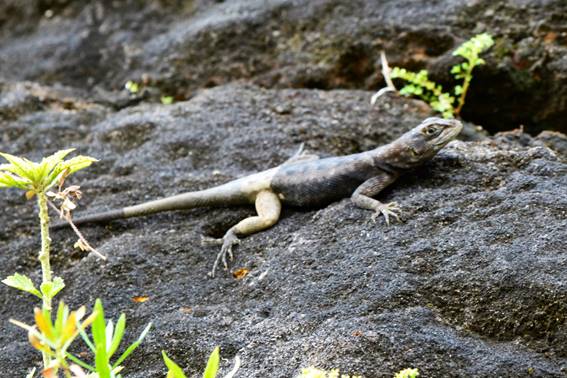Leucism is an unusual coloration pattern caused by developmental anomalies in the differentiation of the pigment cells, usually due to genetic mutations or environmental factors that cause an excess or deficit in the metabolism of dermal pigmentation, restricted to specific body region or throughout the entire body (Duellman & Trueb, 1994). In vertebrates leucism does not occur frequently in nature but has been recorded in amphibians (Keely & Maldonado, 2013; Moraes & Kaefer, 2015) and reptiles (Noronha et al., 2013; Kornilios, 2014). Among the hereditary chromatic anomalies, there are several classifications based on pigmentation loss, being leucism and albinism the main recognized types (Miller, 2005; Abreu et al., 2013). Although the terminology used is divergent and many authors consider leucism as partial albinism (Rodríguez-Pinilla & Gómez-Martínez, 2011; McCardle, 2012). Leucism occurs when the body of the animal is partially or totally depigmented, but the remaining margins of the body and the eyes remain pigmented, while albinism occurs in animals with complete absence of pigmentation, including the eyes, which become reddish or pink (Fertl & Rosel, 2002; Miller, 2005). Here we present the first record of leucism in Tropidurus hispidus.
Lizards of the genus Tropidurus (Wied, 1820) are abundant diurnal species found in open formations and forested habitats, distributed from southern Venezuela, through the Guianas to northeastern Brazil, from there west south of the Amazon region to eastern Bolivia, extreme northern Uruguay, and central Argentina (Frost, 1992; Frost et al., 2001). Tropidurus hispidus is a heliothermic species belonging to the T. torquatus species group, widely distributed throughout northeastern South America, including the Caatinga of northeastern Brazil, with a southern limit in Bias Fortes, Minas Gerais, Brazil (Rodrigues, 1987; Frost et al., 2001).
At 1055 h on 21 September 2015, a leucistic male of Tropidurus hispidus was photographed on a rocky surface and leaf litter around the Fortaleza de São José de Macapá (0.031058 oN, 51.049133 oW, datum WGS84), municipality of Macapá, Amapá state, Brazil. The lizard exhibited some level of depigmentation, with a white-grayish tone throughout the posterior half of the body, as well as in the hind limbs and digits, except for darkly pigmented eyes and some parts of the animal’s skin. The front half of the body and the entire head were gray or dark brown (Fig. 1), confirming a case of leucism.

Figure 1. Leucistic adult specimen of Tropidurus hispidus found at Fortaleza de São José de Macapá, municipality of Macapá, Amapá state, Brazil.
Phenotypic abnormalities in coloration patterns are rare in wild populations (Bechtel, 1995) mainly due to the low survival rates (Krecsák, 2008; Virens et al., 2017). For species with diurnal activity the loss of pigmentation makes individuals more susceptible to selective pressures related to visually-oriented diurnal predators. Also, unusual coloration may be associated with morphological and immunological abnormalities (Parsons & Bonderup-Nielsen, 1995). Recently, Ayala-Monedero & Álvares-León (2014) reported a case of incomplete leucism in the green iguana (Iguana iguana iguana) of the Caribbean Colombian. To our knowledge, this is the first report of partial leucism in T. hispidus in Eastern Amazon and come to enhance the knowledge about the occurrence of this type of abnormality in natural populations of reptiles.











 nueva página del texto (beta)
nueva página del texto (beta)


